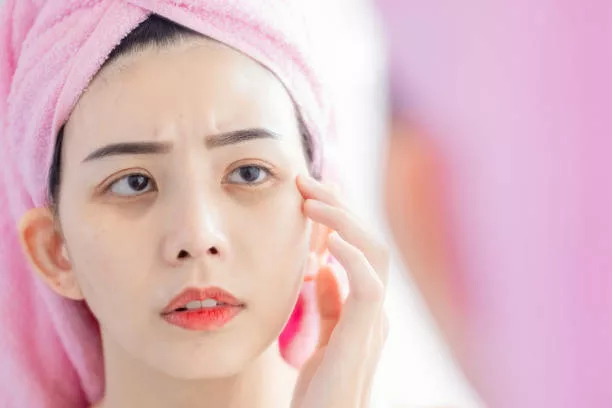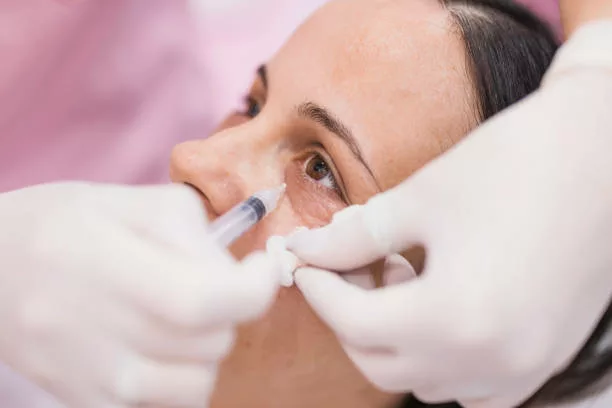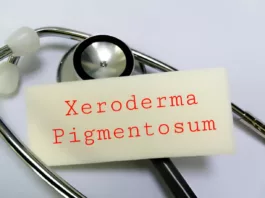
What is Periorbital Hyperpigmentation?
Periorbital Hyperpigmentation is a common condition that appears as a bilateral, brown to black, darkening of the area surrounding the eyes. It is usually circular or semi-spherical in shape. It primarily affects the lower eyelids but can also occasionally affect the temporal, lateral, malar, and upper eyelid regions of the face. Infraorbital darkening, periocular hyperpigmentation, periorbital melanosis, and, most frequently, dark circles are some other terms used for periorbital hyperpigmentation. It is usually harmless, but it can have aesthetic and psychological impacts, affecting self-esteem and physical appearance.
Causes of Periorbital Hyperpigmentation
Periorbital hyperpigmentation has been observed to have a hereditary pattern and is more common in specific ethnic groups, such as Southeast Asians and Africans.1 Freitag, F. M. and Cestari, T. F. (2007). What causes dark circles under the eyes?. Journal of Cosmetic Dermatology, 6(3), 211-215. https://doi.org/10.1111/j.1473-2165.2007.00324.x
There are multiple etiological factors linked to it, some of them including:
- Stress
- Lack of sleep- usually causes a temporary appearance of a dull, fatigued look underneath the eyes.
- Age-related changes- sagging of the skin, loss of fat, giving a hollowed look to the eyes, thinning of the skin around the eyes
- Anaemia
- The superficial location of vasculature- making the dark-colored blood vessels stand out more and give a bluish hue to the undereye area
- Differences in individual’s facial ligament structure
- Prominent bony structure- making eye area stand out more in those who have it
- Reduced/ lack of overall facial fat- specifically underneath the eyes
- Periorbital edema
- Postinflammatory hyperpigmentation
- Shadowing due to skin’s lack of firmness
- Specific allergies, such as hay fever, allergic dermatitis, or atopic eczema
- Lack of adequate hydration
- Thin skin underneath the eyes- making subcutaneous tissue and vessels underneath the eyes more prominent than they are
- Improper lymphatic drainage under the eyes
- Reduced elastin production—A reduction in the skin’s elasticity makes it unable to retain adequate amounts of water, causing it to appear dull, fragile, and tired.
- Smoking
- Side effects to certain drugs, i.e., Eye drops used to treat certain eye conditions, such as glaucoma
- Medical disorders like kidney, heart, liver, Vitamin K abnormalities, hereditary coagulopathies, and Addison disease.
Types of Periorbital Hyperpigmentation
Periorbital hyperpigmentation is classified into four major subtypes based on various clinical analyses. The classification depends on how they appear clinically and what kind of vasculature they have. The types include:
Pigmented Type of Periorbital Hyperpigmentation
In this type, infraorbital discoloration is seen mainly in brown hues, ranging from light to darker shades. As the name suggests, there is an excessive accumulation of pigment—melanin—around the eyes of this type.
Vascular Type of Periorbital Hyperpigmentation
The superficial location of vessels lying underneath the skin is the causative factor in this type. Another reason is that the skin itself is thin over the orbicularis oculi muscle. Edematic hyperpigmentation, caused by excessive fluid accumulation, can contribute to the appearance of dark circles around the eyes, often associated with vascular periorbital hyperpigmentation. This type of hyperpigmentation has color gradients ranging from blue to hues of pink and purple underneath the eyes.
Structural Type of Periorbital Hyperpigmentation
Any abnormality in the periorbital eye structure, i.e., in the contour, amount of fat deposition, skin laxity, edema, or tear trough depression, can result in shadows and, consequently, dark circles. This type is seen to have a color gradient consistent with that of the skin. A stretch test is a method often used to differentiate this type from other types of periorbital hyperpigmentation, in which stretching the skin underneath the eyes results in the disappearance of dark circles.
Mixed Type of Periorbital Hyperpigmentation
This type combines one or more subtypes (78%) discussed above. It generally includes pigmented vascular, pigmented structural, and vascular structural.2Daroach, Manju; Kumaran, Muthu S.. Periorbital hyperpigmentation − An overview of the enigmatous condition. Pigment International 5(1):p 1-3, Jan–Jun 2018. | DOI: 10.4103/Pigmentinternational.Pigmentinternational
Another classification of periorbital hyperpigmentation includes four further types: vascular, constitutional, postinflammatory hyperpigmentation, and shadow effects. This was formed in a Ranu et al. classification proposal.3 RANU, HARNEET MBBS, MRCP(UK), MSCCLIN DERM(LOND), MMED INT MED(SING)1; THNG, STEVEN MBBS, MRCP(UK)1; GOH, BOON KEE BSC(HONS), MBCHB(LEEDS), MRCP(UK), FAMS1; BURGER, ALLAN PHD2; GOH, CHEE LEOK MD, MBBS, MRCP(UK), FRCPE, FAMS1. Periorbital Hyperpigmentation in Asians: An Epidemiologic Study and a Proposed Classification. Dermatologic Surgery 37(9):p 1297-1303, September 2011. | DOI: 10.1111/j.1524-4725.2011.02065.x .
They found that in the Chinese population (Fitzpatrick skin I–IV), the vascular type (41.8%) was the most prevalent variation, followed by constitutional hyperpigmentation (38.6%), while constitutional was most common in the Indian and Malay populations (Fitzpatrick skin V–VI). In another Indian study, it was found that post-inflammatory disease (22.5%), vascular disease (8%), and constitutional illness (51.5%) are the usual causes amongst the Indian population.4RANU, HARNEET MBBS, MRCP(UK), MSCCLIN DERM(LOND), MMED INT MED(SING)1; THNG, STEVEN MBBS, MRCP(UK)1; GOH, BOON KEE BSC(HONS), MBCHB(LEEDS), MRCP(UK), FAMS1; BURGER, ALLAN PHD2; GOH, CHEE LEOK MD, MBBS, MRCP(UK), FRCPE, FAMS1. Periorbital Hyperpigmentation in Asians: An Epidemiologic Study and a Proposed Classification. Dermatologic Surgery 37(9):p 1297-1303, September 2011. | DOI: 10.1111/j.1524-4725.2011.02065.x
Treatment for Periorbital Hyperpigmentation
Understanding the exact etiology of periorbital hyperpigmentation is crucial to treating it effectively. There are two subtypes of treatment, medical and surgical, which are further subdivided into various categories and treatment options. If individuals are unwilling to opt for any medical or surgical intervention, cosmetic usages such as color correctors or concealers can help minimize the appearance of dark circles.
Non-invasive Management
The medical management of Periorbita Hyperpigmentation includes the following:
Bleaching agents:
The first line of treatment in cases where proper sleep, hydration, and stress are not the causes includes topical depigmenting agents such as hydroquinone, kojic acid, azelaic acid, and topical retinoic acid.5 Goldman A, Goldust M, Wollina U. Periorbital Hyperpigmentation—Dark Circles under the Eyes; Treatment Suggestions and Combining Procedures. Cosmetics. 2021; 8(2):26. https://doi.org/10.3390/cosmetics8020026. Bleaching products work by inhibiting the tyrosinase enzyme. This enzyme normally converts dopa to melanin, but by blocking this process, bleaching products reduce the amount of melanin in the epidermis, leading to a lighter appearance and minimizing the visibility of dark circles.
Hydroquinone
It is one of the most commonly prescribed bleaching agents worldwide. The most frequent concentration prescribed is usually around 3-6%. Hydroquinone takes about 3 to 6 months to show its results effectively. The minimum time recommended for usage is three months.6Michelle, L., Pouldar Foulad, D., Ekelem, C., Saedi, N., & Mesinkovska, N. A. (2021). Treatments of Periorbital Hyperpigmentation: A Systematic Review. Dermatologic surgery: official publication for American Society for Dermatologic Surgery [et al.], 47(1), 70–74. https://doi.org/10.1097/DSS.0000000000002484
Azelaic acid
Azelaic acid has previously successfully treated melasma and other hyperpigmented conditions. Its mode of action involves blocking mitochondrial enzymes and DNA synthesis, which directly causes cytotoxic effects on melanocytes—cells responsible for pigmentation in the skin—resulting in ultimately reduced pigmentation underneath the skin.
It is safe to use for extended periods. It is a potentially promising medication for periocular hyperpigmentation resulting from postinflammatory hyperpigmentation. Previous in vitro studies have proven its efficacy.
Kojic acid
Kojic acid- another bleaching agent used to block the production of tyrosine- is added to a gel that contains 2% hydroquinone, 10% glycolic acid, and other similar antioxidants to improve pigmentation in melasma further. It has been used previously to treat periorbital hyperpigmentation, and it has been successful despite the lack of robust research on the subject. Its side effects include contact dermatitis and erythema.
Topical Vitamin C:
Vitamin C can improve the appearance of dark circles under the lower eyelid. It does this by stimulating collagen production and masking the color of blood stasis, a condition caused by improper blood flow and lymphatic drainage.
Sunscreens:
Wearing UV-coated eyewear and applying broad-spectrum sunscreen can significantly reduce the appearance of periorbital hyperpigmentation. Their use is often prescribed as first-line treatment, along with bleaching agents.7Ellen C. Gendler, Treatment of Periorbital Hyperpigmentation, Aesthetic Surgery Journal, Volume 25, Issue 6, November 2005, Pages 618–624, https://doi.org/10.1016/j.asj.2005.09.018
Chemical Peels:
For the periocular area, dermatologists most commonly prescribe a 20% concentration of glycolic acid. Additionally, they use 15% lactic acid in combination with trichloroacetic acid (TCA) 3.75%.
Furthermore, a post-peel demarcation refers to a visible line of difference where the chemical peel affects medium to dark skin tones. To prevent this, dermatologists recommend treating the entire face when addressing periorbital hyperpigmentation.
Finally, pretreatment with a combination of tretinoin and hydroquinone bleaching product for two to four weeks before a chemical peel can help prevent post-inflammatory hyperpigmentation, a potential side effect.
Lasers:
Cosmetic dermatologists have recently begun using nonsurgical lasers to target pigmentation and blood flow. These lasers have been effective in treating periorbital hyperpigmentation. Some of the most commonly used lasers for treating dark circles include the Q-switched alexandrite laser (694 nm), Q-switched ruby laser (694 nm), and Nd: Yag laser (1064 nm).
The Q-switched ruby laser effectively treats dermal and epidermal pigmentation, making it the first-choice treatment for periorbital hyperpigmentation. Nd: Yag laser (1064nm) effectively lowers the pigmentation and vascular component underneath the eyes. Lasers can tighten loose skin and improve the appearance of trough deformities, addressing age-related changes.
Fillers:
The periorbital area can be reshaped in three dimensions using hyaluronic acid gel as a filler. This procedure has proven successful in many reported cases.

Carboxytherapy:
Several researchers have observed notable improvements in periorbital hyperpigmentation and fine lines by administering weekly subcutaneous injections of CO2 in the periorbital region.8 Seirafianpour F, Atefi N, Amin NG, et al. Effectiveness, safety, and patient satisfaction of carboxytherapy as an adjunctive treatment for periorbital hyperpigmentation. Skin Res Technol. 2024; 30:e13651. https://doi.org/10.1111/srt.13651
Surgical Management
If the non-invasive treatment options do not improve the appearance of dark circles, the doctor may suggest some other options, which include:
Blepharoplasty:
Blepharoplasty removes the baggy appearance underneath the eyes and reshapes the upper eyelid, eliminating excess skin. It can also eliminate dark circles under the eyes caused by shadows due to extra skin or fat deposits. There are two further types of blepharoplasty:
Transconjunctival Blepharoplasty
In this procedure, an incision is made through the lower eyelid conjunctiva. This type of blepharoplasty does not affect the skin as it involves no external incisions. It offers minimal to no risk of scarring, making it a preferred choice over transcutaneous blepharoplasty.
Transconjunctival blepharoplasty and deep-depth phenol peel—the deepest type of chemical peel, going as deep as the dermal layer of the skin—have been utilized simultaneously in various clinical settings to treat skin hyperpigmentation and orbital fat deposition.
Transcutaneous Blepharoplasty
As the name suggests, this type of blepharoplasty involves making an incision through the skin to remove loose tissue or excess fat. New techniques involve placing the incision inferior to the tarsal margin, leaving a collar of the pretarsal orbicularis oculi muscle untouched.9Garcia, R. E., & McCollough, E. G. (2006, Nov 1). Transcutaneous Lower Eyelid Blepharoplasty With Fat Excision: A Shift-Resisting Paradigm. Archives of Facial Plastic Surgery, 8(6). https://doi.org/10.1001/archfaci.8.6.374
Autologous Fat Transplantation:
Autologous fat transplantation is a procedure used to treat periorbital hyperpigmentation, particularly when it is caused by thin and translucent skin on the lower eyelids that reveals the underlying orbicularis oculi muscle. This technique involves harvesting fat from another part of the patient’s body, such as the abdomen or thighs, and carefully injecting it into the lower eyelid area. The transplanted fat helps to thicken the skin, thereby reducing the visibility of the underlying muscle and the associated dark pigmentation. This approach not only addresses the hyperpigmentation but also improves the overall contour and appearance of the lower eyelids, offering a more youthful and refreshed look.
Conclusion
As discussed above, several contributing factors cause periorbital hyperpigmentation. Identifying the exact cause and mechanism is necessary to guide the right treatment for a more favorable and successful outcome for individuals. If you’re struggling with periorbital hyperpigmentation and haven’t found a solution yet, visiting a dermatologist can be incredibly helpful.
Refrences
- 1Freitag, F. M. and Cestari, T. F. (2007). What causes dark circles under the eyes?. Journal of Cosmetic Dermatology, 6(3), 211-215. https://doi.org/10.1111/j.1473-2165.2007.00324.x
- 2Daroach, Manju; Kumaran, Muthu S.. Periorbital hyperpigmentation − An overview of the enigmatous condition. Pigment International 5(1):p 1-3, Jan–Jun 2018. | DOI: 10.4103/Pigmentinternational.Pigmentinternational
- 3RANU, HARNEET MBBS, MRCP(UK), MSCCLIN DERM(LOND), MMED INT MED(SING)1; THNG, STEVEN MBBS, MRCP(UK)1; GOH, BOON KEE BSC(HONS), MBCHB(LEEDS), MRCP(UK), FAMS1; BURGER, ALLAN PHD2; GOH, CHEE LEOK MD, MBBS, MRCP(UK), FRCPE, FAMS1. Periorbital Hyperpigmentation in Asians: An Epidemiologic Study and a Proposed Classification. Dermatologic Surgery 37(9):p 1297-1303, September 2011. | DOI: 10.1111/j.1524-4725.2011.02065.x
- 4RANU, HARNEET MBBS, MRCP(UK), MSCCLIN DERM(LOND), MMED INT MED(SING)1; THNG, STEVEN MBBS, MRCP(UK)1; GOH, BOON KEE BSC(HONS), MBCHB(LEEDS), MRCP(UK), FAMS1; BURGER, ALLAN PHD2; GOH, CHEE LEOK MD, MBBS, MRCP(UK), FRCPE, FAMS1. Periorbital Hyperpigmentation in Asians: An Epidemiologic Study and a Proposed Classification. Dermatologic Surgery 37(9):p 1297-1303, September 2011. | DOI: 10.1111/j.1524-4725.2011.02065.x
- 5Goldman A, Goldust M, Wollina U. Periorbital Hyperpigmentation—Dark Circles under the Eyes; Treatment Suggestions and Combining Procedures. Cosmetics. 2021; 8(2):26. https://doi.org/10.3390/cosmetics8020026
- 6Michelle, L., Pouldar Foulad, D., Ekelem, C., Saedi, N., & Mesinkovska, N. A. (2021). Treatments of Periorbital Hyperpigmentation: A Systematic Review. Dermatologic surgery: official publication for American Society for Dermatologic Surgery [et al.], 47(1), 70–74. https://doi.org/10.1097/DSS.0000000000002484
- 7Ellen C. Gendler, Treatment of Periorbital Hyperpigmentation, Aesthetic Surgery Journal, Volume 25, Issue 6, November 2005, Pages 618–624, https://doi.org/10.1016/j.asj.2005.09.018
- 8Seirafianpour F, Atefi N, Amin NG, et al. Effectiveness, safety, and patient satisfaction of carboxytherapy as an adjunctive treatment for periorbital hyperpigmentation. Skin Res Technol. 2024; 30:e13651. https://doi.org/10.1111/srt.13651
- 9Garcia, R. E., & McCollough, E. G. (2006, Nov 1). Transcutaneous Lower Eyelid Blepharoplasty With Fat Excision: A Shift-Resisting Paradigm. Archives of Facial Plastic Surgery, 8(6). https://doi.org/10.1001/archfaci.8.6.374




